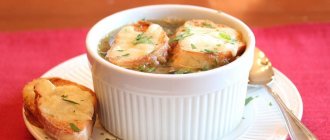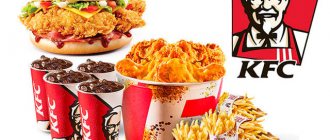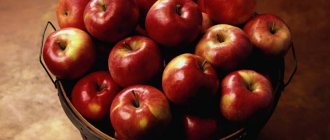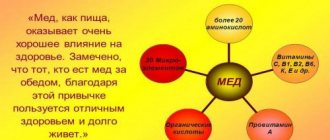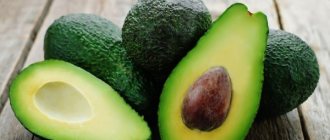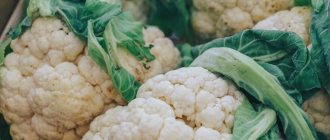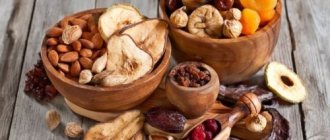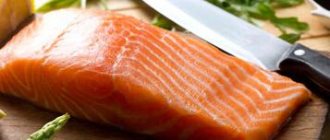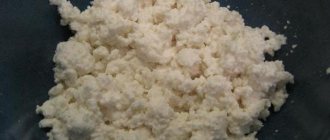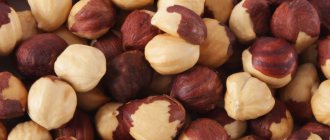Home » Nutrition » Proper nutrition » How many calories are in boiled rice
Everyone wants to have an ideal figure without a “life ring” around the waist, ears on the hips, cellulite on the butt. There can be many reasons for this: a quick trip to the sea, a visit to the pool, a surprise for your significant other, your own desire. In order to lose excess weight, you definitely need to calculate the calorie content of your entire diet, as well as exercise, stay hydrated, and sleep well.
Today this is quite simple to do, because on finished packaged products the energy value is clearly indicated next to the amount of proteins, fats, carbohydrates, and for individual products, especially those purchased at the market or by weight (cereals, vegetables, fruits, meat, and so on), information will be found on the Internet. In this article you will learn about the calorie content of boiled rice, its beneficial and dietary properties in various dishes.
Many nutritionists who create various healthy diets include a product that arrived in Europe from mysterious Asia - rice. There are different types of it on store shelves: white, brown, black, brown; shapes: round, oval; with different levels of cleaning: polished, non-polished...
At the same time, many people say that this product contains too many simple carbohydrates. Who is right after all? How many calories are in each type of boiled rice and is it worth eating it while losing weight?
Rice is an annual herbaceous plant that grows where there is a lot of moisture and warmth. The spirit does not tolerate temperature changes or frost. When remembering this word, everyone sees a beautiful flooded clearing with small green sprouts, looked after by short people in baggy clothes and sloping straw hats. It was brought to Europe a long time ago, about 2000 years ago from China. Today the PRC (People's Republic of China) is the largest importer, they produce about 198 tons annually!
Features and energy value of each type of rice
Various varieties appeared in stores and supermarkets, and people were confused - which one is better, and therefore healthier.
The variety of varieties is pleasing to the eye: there are steamed, red, and white, and even several types of brown, as well as the usual long-grain and short-grain rice. How many calories are in different types of rice are presented in detail in the table.
| Type of rice | Calorie content/kcal |
| Round grain white | 345 |
| Brown | 336 |
| Wild | 356 |
| Red | 363 |
| Long grain white | 366 |
| Basmati | 343 |
| Long grain steamed white | 342 |
| Air | 403 |
| For making sushi | 351 |
Due to the different calorie content of cereals, you can create a variety of healthy and tasty dishes by combining them with different additives. Wild species with low calorie values can be combined with fatty varieties of fish or meat, and high-calorie long-grain rice can be diluted with lean varieties of fish or dietary meat.
Interesting facts about rice
Rice is useful for people who want to lose weight. It is present in almost every dietary dish. Interesting facts about culture:
- In Japan, culture and the process of eating are denoted by one hieroglyph. Chinese culture is closely intertwined with cereals: the local population does not use the generally accepted terms “breakfast” and “dinner” in conversation. The expressions “rice before bed” or “rice after waking up” are used.
- Cereals have long been grown on an industrial scale - more than 70 million tons per year. Culture has provided jobs for several billion people not only in Asian countries, but also in Europe.
- The tradition of showering newlyweds with cereal originated in Asia. Several decades ago, only wealthy citizens could afford this due to the high cost of grains.
- The stem of the plant is considered ripe if it turns completely yellow.
- Rice is eaten by people regardless of age, social status and religion.
- More than 1,500 dishes can be prepared from grains (including desserts and baked goods).
- Arruza is a measure that has been preserved in a number of Islamic countries. It was used to determine the weight of one grain.
- Growing cereals is a virtually waste-free production. Cardboard and paper are made from leaves and stems.
- The grains can be used to make puffed rice, which is popular among confectioners. Its structure resembles popcorn. To do this, you need to boil the cereal until tender, distribute it evenly on a baking sheet and dry it in the oven. Dry grains are fried in a large amount of vegetable oil.
- Rice is used in the alcohol industry. In China, alcohol is prepared from it and added to wine (rice) and sake.
- Rice is considered a source of starch. Flour and oil are obtained from it.
- Rice flour has found application in cosmetology. It is added to the powder. You can wash your hair with the decoction.
- Cereals, compared to other crops, have a high carbohydrate content.
- Cereal cultivation began more than 9,000 years ago.
We suggest you read: How to lose weight with turbo slim drainage, is coffee harmful?
Rice is considered a moisture-loving plant. Its stems sprout only in swampy areas. Artificially created “swamps” are drained immediately before harvest using special equipment. During the reign of Peter I, the cereal was called “Saracenic millet.” With proper care, the stems of the plant reach 1.5 m in height. Chinese emperors traded rice for other goods with merchants from Europe.
How to cook
The energy value of dry cereal is very different from the calorie content of the finished food. The essence of this is that during the cooking process, cereals absorb moisture, fats and other additives. It follows that the cooking method greatly affects the calorie content of the food. This can be clearly seen in the table provided.
| Type of cereal | kcal per 100 g |
| Dry | |
| Round grain white | 345 |
| Brown | 228 |
| Wild | 100 |
| Red | 361 |
| Long grain white | 364 |
| Basmati | 341 |
| Long grain white steamed | 342 |
| Air | 403 |
| For making sushi | 351 |
| Boiled | |
| Round grain white | 117 |
| Brown | 111 |
| Wild | 79 |
| Red | 126 |
| Long grain white | 128 |
| Basmati | 111 |
| Long grain white steamed | 101 |
| For making sushi | 280 |
| Steamed | |
| Round grain white | 150 |
| Brown | 111 |
| Wild | 101 |
| Red | 149 |
| Long grain white | 137 |
| Long grain white steamed | 136 |
| Fried | |
| Round grain white | 189 |
| Long grain white | 168 |
| Stewed | |
| Round grain white | 159 |
| Brown | 114 |
| Long grain white | 174 |
| Long grain white steamed | 168 |
Ready rice seasoned with salt has a higher calorie content than unsalted rice. Various methods of cooking rice cereals, adding salt increases the calorie content of the dish by about 15 kcal per 100 g of product.
Calorie content of unpolished rice
To obtain unpolished rice, the grains are subjected to mechanical processing, during which a thin layer is removed from the grains. The germ and bran membrane are completely preserved. The unpolished variety can be red or brown, its calorie content varies between 100-130 kcal. The cereal is useful for people suffering from gluten intolerance, which is present in white varieties.
Heat treatment does not in any way affect the calorie content of the cereal and the ratio of proteins, fats and carbohydrates. Cereals contain a large amount of magnesium, so its regular consumption helps restore the nervous system and normalize sleep. The fiber present in the composition acts as a sorbent, cleansing the body of waste and toxins.
Brown and brown varieties of rice have a beneficial effect on the intestines: with their help you can get rid of constipation for a long time. Cereals are useful for people with stomach ulcers. After cooking, the rice must be allowed to brew: to do this, wrap the pan with the grain in a towel and leave for 60-90 minutes.
Rice product with various additives
If you add other ingredients to the rice, it will be a finished dish, and not just a side dish. By improvising with ingredients, you can get delicious dishes of Russian, Italian, Japanese cuisine, as well as vegetarian and dietary ones.
Video
Rice cooked with additives has a different calorie content than components that were cooked separately from each other. The caloric content includes oil and other ingredients that go into the dish. The table shows the calorie content of the components that are usually added to rice.
| Additive | Kcal per 100 g | Rice + additive per 100 g |
| Oil | 749 | 126 |
| Onion | 44 | 125 |
| Carrot | 38 | 102 |
| Vegetables | 41 | 114 |
| Beef | 198 | 206 |
| Pork | 293 | 138 |
| Chicken | 167 | 132 |
| Ground meat | 285 | 233 |
| Seafood | 113 | 123 |
| Egg | 144 | 95 |
| Cabbage | 29 | 88 |
| Raisin | 268 | 169 |
Oil has a huge calorie content, but only up to 5% of it can be added to rice, unlike other dishes, which are flavored with at least 20% of it, so the finished dish has a low calorie content. The calorie content of a dish with additives increases depending on the cooking method. Boiled it will be much lower than fried.
Video
Composition and beneficial properties
Rice is used to prepare various dishes, including dietary ones. This demand can be explained by the beneficial properties that this type of cereal has:
- It does not contain a plant protein called gluten. It negatively affects the body and can cause various allergic reactions;
- Includes more than 80% complex carbohydrates. This quality allows rice to be included in the diet menu;
- Contains potassium, which helps neutralize the negative effects of salt that comes with other foods and remove excess fluid from the body;
- It contains a minimal amount of salt. Therefore, it is recommended for people with impaired functioning of the cardiovascular system and kidney diseases;
- Contains a complex of useful vitamins that stimulate the functioning of the nervous, cardiac, digestive and endocrine systems;
- Has enveloping properties. Thanks to these advantages, rice is useful for people with digestive system disorders.
It contains macro and micro elements:
Before eating, it is important to choose it correctly, taking into account what dish you plan to prepare.
For preparing porridges, milk soups and sushi, it is better to choose large-grain rice.
Medium grain rice is suitable for dishes such as soups and risotto. When preparing pilaf, the ideal option would be to choose long-grain rice. The most useful types, such as black and wild, are perfect for making salads. The right variety will allow you to prepare a truly tasty and delicious dish.
Ready meals
The composition of a serving of food consists of many components, so calorie content is more difficult to calculate. But the energy value of ordinary dishes is approximately the same.
| Dish | Kcal |
| Pilaf | 208 |
| Stuffed cabbage rolls | 148 |
| First | 55 |
| Stuffed cabbage rolls with minced meat | 134 |
| Pepper | 148 |
| Hedgehogs | 166 |
| Meatballs | 159 |
| Crab salad | 199 |
| Chicken soup | 64 |
Comparison with other products
Throughout the country, rice, potatoes and buckwheat are considered favorite side dishes. They are all healthy and tasty, they cook in approximately the same time, but they differ in calorie content.
| Product | Kcal |
| Boiled | |
| Rice | 117 |
| Buckwheat | 113 |
| Potato | 84 |
| Fried | |
| Rice | 189 |
| Buckwheat | 109 |
| Potato | 189 |
| Stewed | |
| Rice | 159 |
| Buckwheat | 131 |
| Potato | 104 |
Rice is considered the most nutritious, buckwheat has low calorie content and is good for weight loss, and potato dishes occupy a neutral position.
Video
Useful material
The benefits of boiled rice are invaluable not only because of the small amount of calories, but also because of the mass of useful substances contained in it (potassium - 314 mg, phosphorus - 328 mg, vitamins B, E, PP, H).
For example, foods rich in potassium, which includes rice, are recommended for consumption by people with severe cardiovascular pathology.
Along with phosphorus and potassium, rice also contains other minerals that are extremely necessary for the body, such as:
- magnesium - 116 mg;
- silicon - 1240 mg;
- calcium - 40 mg;
- manganese - 3.63 mg;
- zinc - 1.8 mg;
- sulfur - 60 mg;
- sodium - 30 mg;
- iron - 2.1 mg.
Rice is a very valuable source of vitamins, amino acids and microelements so necessary for our body. It has enveloping properties and is indispensable for a number of gastrointestinal problems.
Low-calorie boiled rice is a product rich in starch, containing a number of vital amino acids and a large amount of dietary fiber. Due to its composition and low calorie content, rice perfectly regulates the activity of the entire digestive system.
The nutritional value
High calorie content does not shed light on the nutritional value of cereals, which consists of the content of proteins, fats, carbohydrates and other substances. Knowing the indicators of KBZHU is required to create a dietary menu:
| 100 grams of dry white rice contains | |
| Squirrels | 7.5 g |
| Fats | 2.6 g |
| Carbohydrates | 62.3 g |
| Alimentary fiber | 9.7 g |
| Water | 14 g |
Rice also contains many vitamins and microelements: B1, B2, B6, B9, E, H, PP, magnesium, phosphorus, copper, manganese, selenium, molybdenum, cobalt. There are also minerals: potassium, calcium, magnesium, sodium, chlorine. The content of useful substances and the optimal nutritional value of rice includes it in the list of useful products for the human body.
Rice's help in the fight for slimness
Rice is an excellent absorbent. Many people practice grain-based diets, use cleansing techniques, and use decoction to cope with indigestion.
Nutritionists and adherents of a healthy diet advise adding grain to the menu, as it will help get rid of extra pounds. However, the glycemic index (GI) of rice is high, so it stimulates the appetite, which means you shouldn’t eat it in unlimited quantities.
Unfortunately, this cereal cannot be called an absolutely dietary product, although those who have tried the rice diet report positive dynamics in weight change. After all, 100 grams of boiled rice contains less than 140 kcal.
For a low-calorie or diet menu, wild rice is best. Due to the presence of complex carbohydrates in the shell, it saturates for a long time and prevents the formation of new fat accumulations. Cooked in water without salt or sugar, it will be an excellent dietary dish, on which you can have a fasting day 1-2 times a week, but no more than 4 times. Otherwise, the body will experience severe stress.
Benefits and harms
Boiled rice energizes the human body well, ensuring the smooth operation of all its systems. Vitamins improve digestion, hair and nails.
But these are not all the advantages of cereals:
- Rice decoction has an enveloping effect. This property is required to relieve pain in patients with gastric and duodenal ulcers.
- The presence of fiber in it improves the intestinal microflora. This reduces the risk of diabetes.
- Low-calorie rice promotes weight loss.
- Removes toxins.
- Rice does not contain salt and is good for kidney and gallbladder pathologies.
- The high content of dietary fiber removes waste products and removes cancer cells.
- The minimal amount of sodium makes it possible for hypertensive patients to consume rice.
- Brown rice contains neurotransmitters that prevent brain diseases.
- Antioxidants lower cholesterol.
- Contains complex carbohydrates that can keep you feeling full for a long time.
- Rice water has diuretic properties.
- Tryptophan and lecithin improve metabolism.
- Rice decoction helps remove phlegm from various types of cough.
In addition, rice dishes improve digestion, reduce acidity, and control thyroid function.
Rice is a hypoallergenic grain, so it is the first one given to babies for complementary feeding. If a person does not have an individual intolerance to the product, then it must be included in their diet. But moderation should be observed, since the product contains starch, which reduces intestinal motility and causes constipation. After eating a dish made from any type of rice, it is recommended to drink water, then this trouble can be avoided.
Kinds
Among the varieties, the following varieties can be distinguished:
- White. This type is considered the most common in cooking. In addition, its preparation requires a minimum of time. During the polishing process, rice loses some of its beneficial properties. The calorie content of this variety is approximately 340 kcal.
- Brown unpolished. Its calorie content is about 330 kcal. This variety is also called brown. During the cleaning process, only the husk is removed from it, and this allows you to preserve all the useful substances in it. It helps remove cholesterol from the body, normalizes kidney function and stabilizes blood circulation and water balance in the body.
- Red. It contains 319 kcal. It can be used by people who suffer from diabetes. Cereals are rich in fiber, which helps burn fat and reduce blood cholesterol levels. In addition, red rice improves digestion and stimulates intestinal motility. It also contains anthocyanins, which are antioxidants for the body. The list of advantages of this product includes slowing down the aging process and preventing the occurrence of cancer.
- Wild rice contains a large amount of protein: about 15 grams per 100 grams of product. Using it in food on a regular basis helps strengthen the muscular system and has a positive effect on metabolic processes in the body. It also stimulates the digestive and immune systems. The calorie content of wild rice is 100 kcal.
- Long grain. This species got its name due to its grains, the size of which ranges from 6 mm or more. It contains fiber, which promotes the proper functioning of the gastrointestinal tract. The number of calories in this rice is 365 kcal.
- Parboiled rice is rice that has been steamed. Its calorie content is approximately 341 kcal.
A wide variety of varieties allows everyone to choose the necessary rice for a specific dish and their diet.
Calorie and BJU table per 100 grams
Data given for raw varieties:
How to choose cereal
To do this correctly, you must follow these rules:
- The packaging must be without visible tears, not dirty, and all printed information must be easy to read. It indicates the manufacturer and production date of the product.
- The transparent bag must be shaken and checked for impurities.
- Check the manufacturing date of the product. The shelf life of rice should not exceed 16-18 months. A shelf life longer than this is allowed only for the basmati variety. The fresher the rice product, the healthier it is.
It is recommended to purchase the product from trusted and reliable manufacturers.
Video
How to burn calories from 100 g of boiled rice
For example, to burn all the calories from 100 grams of boiled rice, you will need 10 minutes of running or 2 hours and 4 minutes of sleep.
>’> >’> >’> >’> >’> >’> >’> >’> >’> >’> >’> >’> >’> >’> >’>
| Activity | Calorie content per day per 100 g | |
| Dream | 2 h 04 min | 9% |
| Meditation | 1 hour 51 minutes | 8% |
| Rest | 1 hour 42 minutes | 7% |
| Reading books, Internet | 1 h 26 min | 6% |
| Sex | 0h 53 min | 4% |
| Yoga, Pilates | 0 h 35 min | 2% |
| Dancing | 0h 33 min | 2% |
| Walking | 0h 29 min | 2% |
| Football | 0h 17 min | 1% |
| Swimming | 0h 17 min | 1% |
| Abs workout | 0 h 15 min | 1% |
| Power training | 0 h 15 min | 1% |
| A ride on the bicycle | 0 h 14 min | 1% |
| Jumping rope | 0 h 11 min | 1% |
| Run | 0 h 10 min | 1% |
Features of the rice diet
The calorie content of boiled rice is not too high, so it is readily included in all kinds of diets. But nutritionists do not advise losing weight on rice alone, as the body may not receive enough of some useful elements. Therefore, you need to add other ingredients to the rice.
Standard Rice Diet
The rice diet can be hard or soft. Hard - pour boiling water over a glass of rice and let it swell. Then divide it into 5 servings and eat it a day without any additives. Soft means eating rice dishes with additives three times a day.
An approximate daily diet is as follows:
- Breakfast can be like this: porridge in water with fruit: pieces of apples, oranges or grapefruits.
- For lunch, make rice boiled in salted water with stewed mushrooms, carrots or boiled broccoli.
- For dinner, cook rice with steamed vegetables, cucumber salad with yogurt.
The diets are strict, so you can stay on them for no more than 5 days, and you need to drink at least 2 liters of water.
Video
Rice-buckwheat
Cereals go well together, as they contain useful elements that complement each other. This diet is much easier to maintain than a pure rice diet. It is as effective as a mono-diet. The mixed diet should last no longer than 5 days.
The daily menu is developed according to the same principle:
- breakfast - any fruit;
- lunch - rice porridge with a mixture of nuts;
- snack - fresh vegetable salad;
- dinner - boiled buckwheat with boiled chicken breast or steamed fish.
If you feel hungry, you are allowed to eat a portion of low-fat cottage cheese without additives.
Video
Rice-honey
This is a strict mono-diet, you should not stick to it for more than 5-7 days. It is not so dangerous compared to some single-ingredient diets, because honey supplies the body with many useful elements. This diet is contraindicated for people who are allergic to honey and other bee products.
Please note: There are two components involved in dietary nutrition: rice and honey. Consumption is simple. Half a kilo of rice porridge is divided into 5 meals and eaten throughout the day. Additionally, prepare a glass of honey drink with the addition of lemon and drink it 3 times during the day. During the diet, other than drinking water, other foods cannot be introduced into the diet.
Calories in red rice
Rice acquires its red hue thanks to anthocyanins, powerful natural antioxidants. The grains are covered with a dense shell, which contains a large amount of vitamins (PP, B, D, A), fiber and microelements (potassium, calcium, potassium, sodium, phosphorus). If you systematically, at least 2-3 times a week, eat this cereal, then:
- the functioning of the digestive tract and liver organs is normalized;
- blood sugar and cholesterol levels decrease;
- weight returns to normal.
For the first time, red rice was exported from Iran. The variety is popular in Asian countries. Red varieties are combined with many foods: it can be cooked with vegetables, mushrooms, lean meat or fish. To make the dish crumbly, you need to sort out the cereal before cooking.
It is poured onto a flat surface in small portions, whole grains are separated from husks, small stones and various fragments. After the cereal has been cleaned, it must be rinsed 2-3 times in cold water. Cooking time is 35-45 minutes. If you soak the rice in warm water for several hours, you can then cook it in 20 minutes.
During the soaking process, the cereal absorbs moisture in large quantities, so when cooking, add not 2-3 glasses of water to the pan, but 150-250 ml. Pour prepared rice into a container with thick walls, add cool liquid, add salt, vegetable oil or other spices. Place the pan over high heat and bring to a boil.
If foam forms, remove it with a spoon. After boiling, cover the pan with a lid and cook the rice over low heat. After the required amount of time has passed, you can try the side dish: if the grains are too hard, add a little water to the container and cook the dish for another 7-10 minutes. The calorie content of the finished product is 120-123 kcal.

